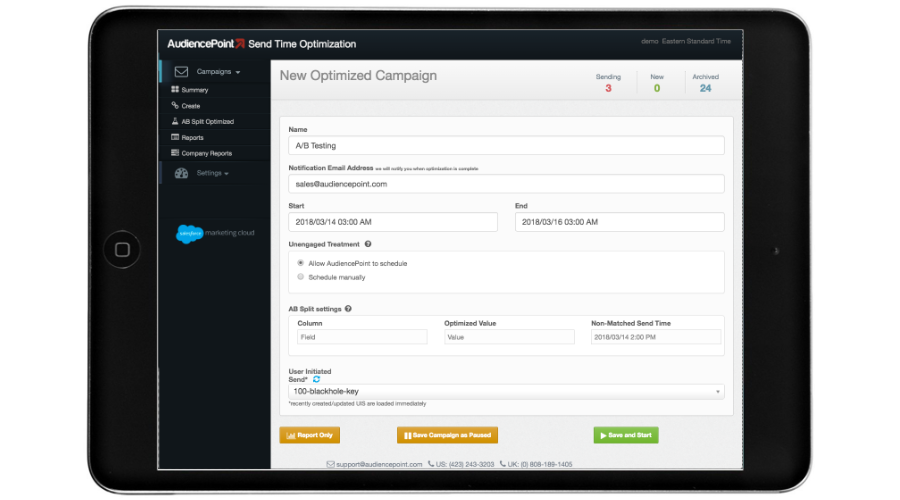In email marketing nothing is more important than making sure your subscribers get your emails. Understanding email deliverability...
Back in October of last year I wrote that in a soft economy for ad-tech and mar-tech, one vertical stood out to me as recession-proof: Politics.
While traditional big spender CPG and retail brands have been tightening their purse strings, I opined that digital marketing spend in the 2024 presidential cycle would be double what it was in 2020, to the tune of more than $4 billion.
As we cross the half-way mark of 2023, we’re seeing that prediction bear itself out.
Higher Spend But Few Donors
Campaigns are pouring millions into elections but are struggling to raise money during this critical stage of the campaign cycle when fundrasing is the paramount objective.
A recent feature in The New York Times described online fundraising amongst small donors as “slugish” so far.
“…the small-dollar online money spigot that helped Mr. Biden smash fundraising records during his 2020 presidential campaign has not yet turned on, and there are ample signs that it may be months before it does.”
As the article went on to explain, the $10.2 million that the Biden campaign has raised from small donors is half of what President Obama raised during the same period for his 2012 re-election effort (which was more than 10 years ago, and the figure isn’t adjusted for inflation).
On the Republican side, things are even worse. All of the Republican campaigns combined have raised substantially more than Biden, and the DeSantis campaign downsized its staff twice already in July — Representing approximately 30% of it’s payroll — with far This is a meaningful difference. If I’ve signed up for a company’s email list, it’s because I like what they are doing and I want to hear from them. Their ability to hone their message in order to better speak to my needs is a huge plus for me. It means the email content I receive is more relevant and I don’t get emails about things I don’t care about.
With ads, this doesn’t matter because I never wanted the ads in the first place. Blocking ad tracking serves the purpose of discouraging companies to serve me ads at all, which is a win for me. I don’t want more relevant ads; I want ads to go away entirely.
Let’s look at some practical examples of how this change will make your email experience worse.
Apple’s Mail Privacy Protection Gives You Worse Content With Bad Timing
Let’s get one thing straight first: for most companies, you opening an email does not impact their business in any way. No one gets paid when you open an email. Email marketers are much more concerned with clicks and conversions (when you actually pay them) than email open rate. So, in some ways, the industry is not too worried about opens going away.
However, eliminating open tracking means that marketers can’t see what you open or when you open it. That can have a lot of negative consequences for the recipient:
- Less relevant content – Email marketers look at what you open and more importantly, what you don’t. They use that information to tailor content specifically for you. Do you always open emails about running shoes but never any about strength training? A savvy marketer will cut back on the strength training content and focus on your shoe obsession. That’s impossible if they can’t tell what you opened.
- Less timely content – Good email marketers also pay attention to when you open. That gives them a good idea of when to send content your way and when to avoid. Once an email is 20 deep in your inbox, you’re a lot less likely to see it or open it. Marketers use your open time history to determine the best time to send to you so that you always see those awesome shoe deals at the top of your inbox.
- Generic subject lines – Good marketers test their subject lines to see which ones are most likely to entice a recipient to open the email. Do you respond better to the name of a new shoe, or the promise of a discount? Subject line testing is almost always measured by open rate, and without those open numbers, subject lines will suffer.
- More email overall – Marketers that don’t have a way to determine what content is best for you are going to default to sending you ALL of their content. The cost to send this content is low, and without a measure of the negative consequences of sending irrelevant content, more marketers will send you everything they have. That means a more cluttered inbox with a lot of content you don’t care about. Get ready to delete a lot of strength training emails!
No Localized Content
Many email marketers take advantage of knowing your IP address to give them an idea of where you are. With this knowledge, they can send you information about local events in your area, details about the weather around you, and many other interesting details. This content is dynamic and changes for different email recipients. Taking our earlier example, if you’re a runner that subscribes to my runner’s email, I can email you about races in your area, and even tell you what the weather is going to be like for this weekend’s 5K. Removing this IP address information means dynamic content is useless.
Does Any of This Matter?
That’s the real question, isn’t it? Will consumers who use the Apple Mail App care about losing the personalization of their emails? That answer is different for everyone, but this change will likely make all of the things you hate about marketing emails even worse. You’ll get less relevant content and more of it. Much of the curation being done to make your emails meaningful to you will become impossible.
Is There a Better Version of This Privacy Feature?
Protecting our privacy and limiting the amount of information we provide to advertisers is important to many of us. Currently, solutions Apple’s Mail Privacy Protection provide blanket policies and binary choices around data sharing.
But the real issue isn’t about sharing your data. It’s about sharing your data indiscriminately and without our knowledge or consent. This is why the ATT was such a great idea. In most cases, people have no idea that their data is being shared across applications. It’s happening without their knowledge, and it’s enabling behavior that they’d rather not see. Email is different in that while many people don’t know that their opens and IP address are being shared, it’s enabling behavior they do want to see.
I envision a better version of Mail Privacy Protection that allows users to decide who to share their information with on a sender by sender basis. If I’m aware of what I’m sharing and what that information will be used for, I’m able to make responsible decisions. This is all about finding a balance between privacy and receiving the content you want when you want it.
What Options Do We Have?
Until we reach that point, every email user has a decision to make: do you want more privacy or better content? Because of how this is currently implemented, you can’t have both. And from a marketer’s standpoint, having fewer data points to inform your sending decisions will make the job harder, without a doubt. This is yet another use-case where product leveraging a shared data pool, like ListFit, can be a game changer. When marketers across hundreds of brands anonymously share what they’re seeing in the inbox, we can create a rising tide notion for our industry to help both sender and consumers reach a healthy balance between privacy and valuable content.
**The addition of MPP also inadvertently creates some security issues for email as well. We’ll discuss that in our next post.




